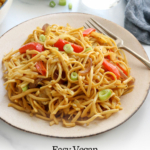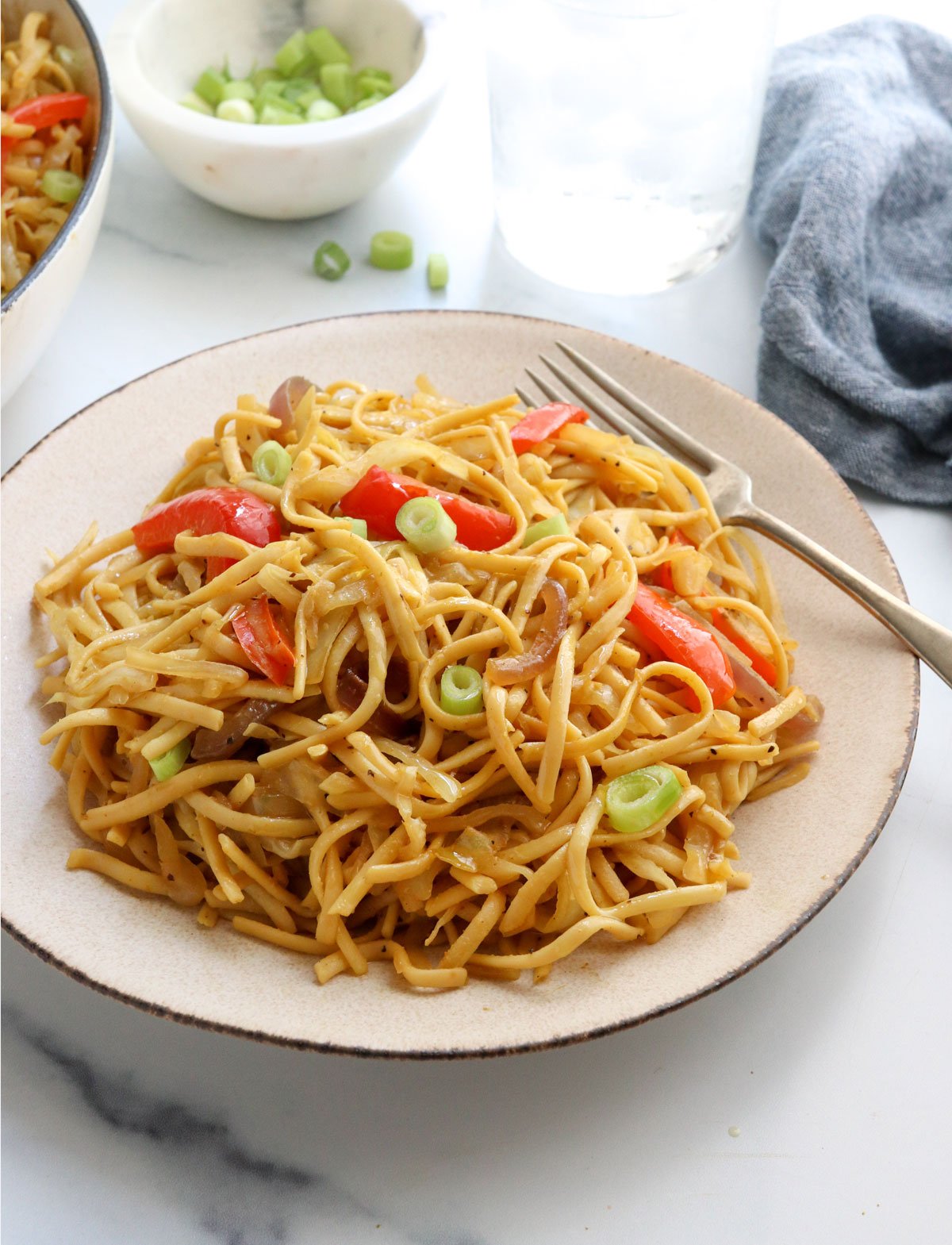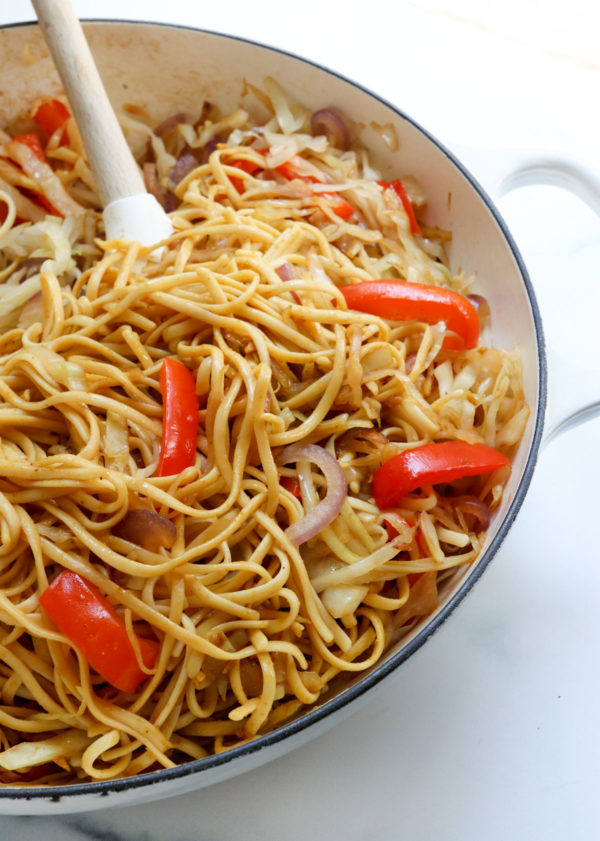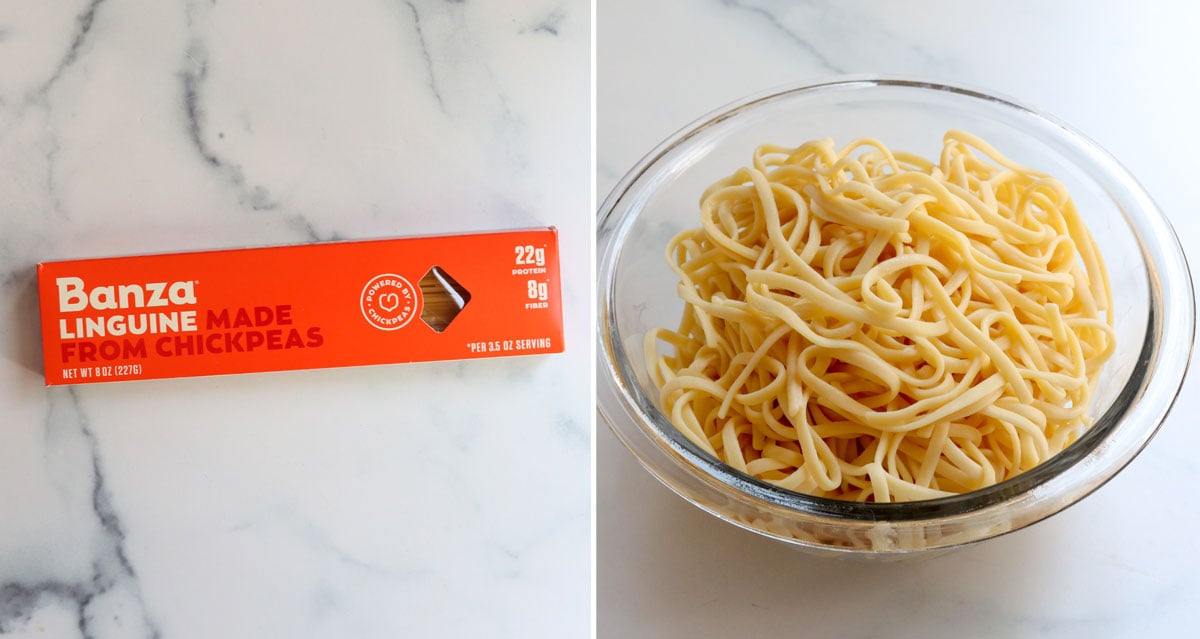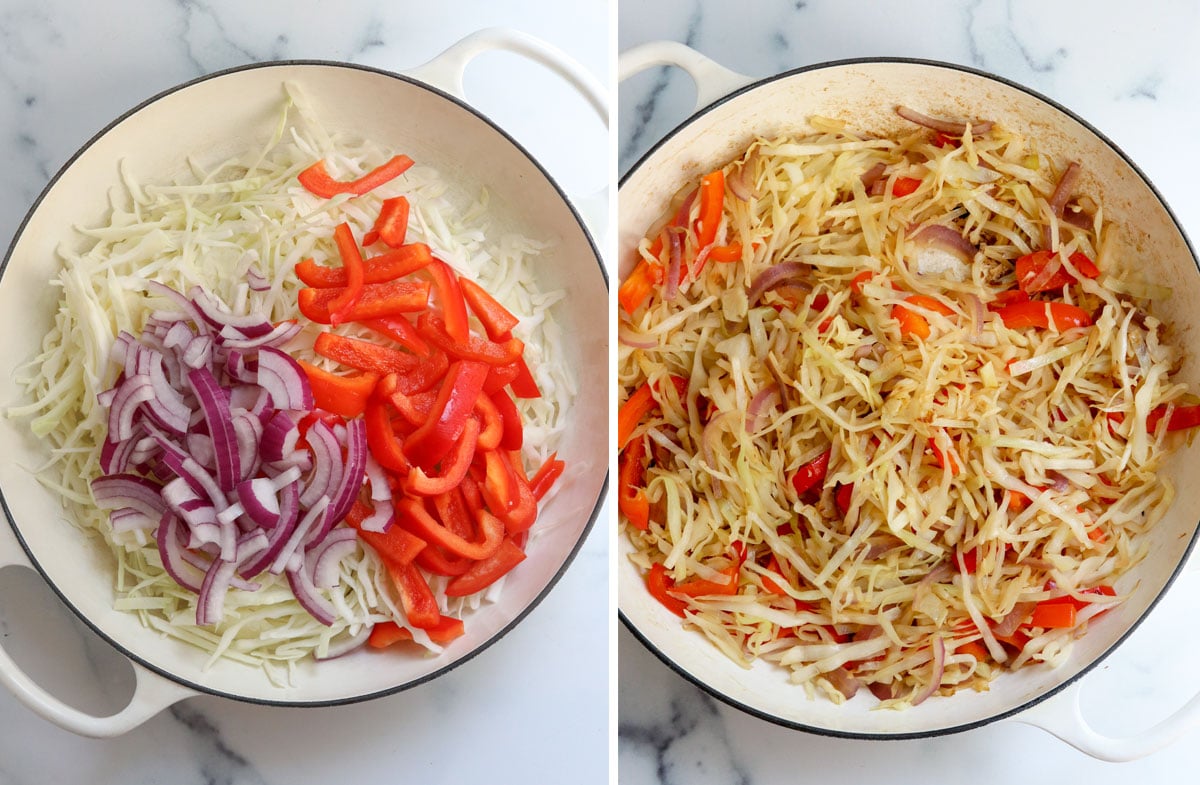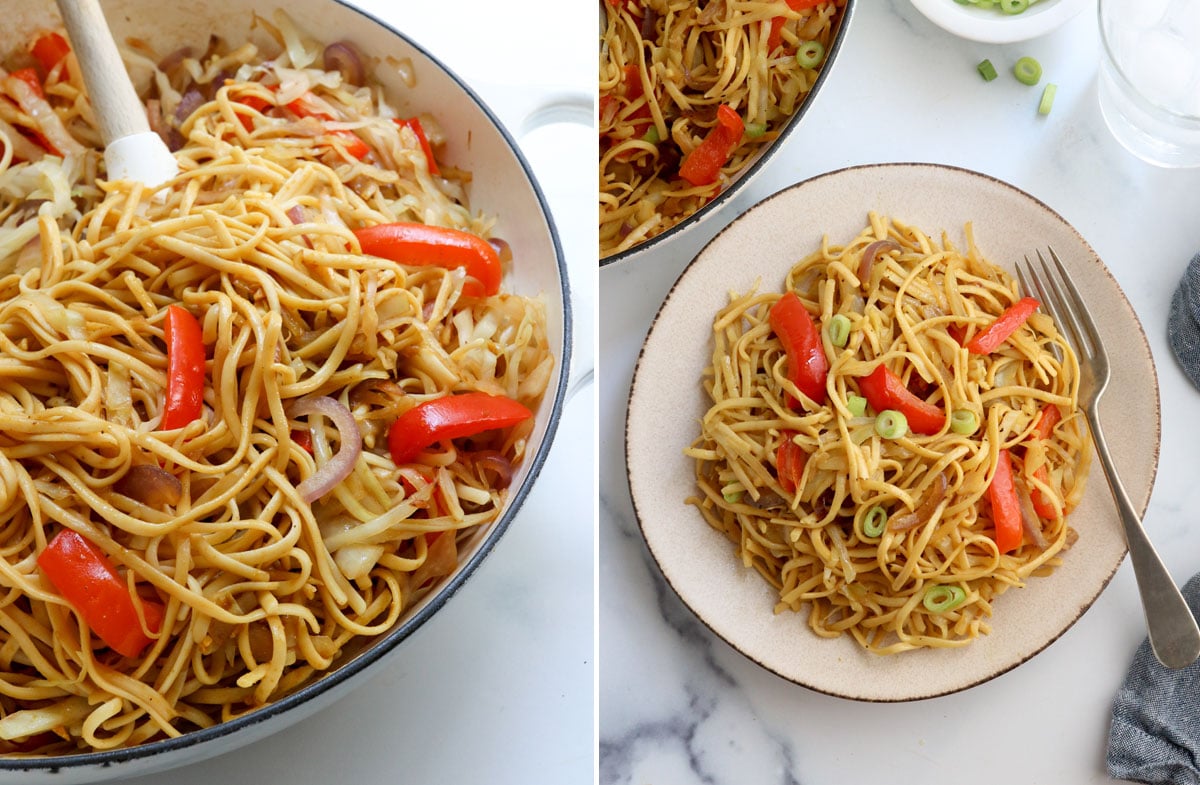Why Make These Singapore Noodles
Picture yourself standing over a hot wok, hearing the sizzle of tender chicken and shrimp as they hit the pan, feeling the warmth of the aromatic garlic and ginger. With each stir, you’re building layers of flavor that turn simple ingredients into something truly special. You’ll be amazed at how quickly the fragrant curry powder blends with the soy and oyster sauces, giving the noodles that perfect balance of savory and slightly sweet. I know you’re busy, but this recipe comes together in just 35 minutes, making it perfect for a weeknight dinner when you want something quick but packed with flavor. And trust me, the best part is when you take that first bite—the tender vermicelli noodles soaked in rich sauces, crisp veggies, and perfectly cooked proteins all come together in a way that’s both comforting and exotic. I promise, once you make this, you’ll want to comment just to share how much you loved it—or, better yet, you’ll be heading straight back to the kitchen to make it again. Start by placing 8 ounces of thin rice vermicelli noodles in a large bowl. Pour hot water over them, ensuring they’re fully submerged. Let them soak for about 5 minutes until they’re tender yet still have a slight bite. In a small bowl, whisk together 3 tablespoons of soy sauce, 2 tablespoons of oyster sauce, 1 tablespoon of rice vinegar, and 1 teaspoon of sugar. Tip: Keep a close eye on the noodles to prevent them from becoming mushy. While the noodles are soaking, heat 1 tablespoon of vegetable oil in a large skillet or wok over medium-high heat. Add 1 pound of thinly sliced boneless, skinless chicken breast and cook for roughly 3-4 minutes until it’s nearly cooked through. Next, introduce 1 cup of large, peeled, and deveined shrimp to the skillet with the chicken. Stir and cook for another 2-3 minutes until the shrimp turn a lovely pink and are fully cooked. Once done, remove both the chicken and shrimp from the skillet and set them aside. Tip: Removing the proteins early prevents them from overcooking while you work on the vegetables. In the same skillet, add the remaining 1 tablespoon of vegetable oil. Toss in 2 cloves of minced garlic and 1 tablespoon of minced fresh ginger, cooking for about 30 seconds until they release their fragrant aromas. Now, add 1 large thinly sliced onion, 1 medium thinly sliced red bell pepper, and 2 medium julienned carrots to the skillet. Stir-fry these vibrant vegetables for approximately 5 minutes until they’re tender-crisp. Push the vegetables to one side of the skillet and pour in 2 beaten large eggs into the empty space. Scramble the eggs until they’re fully cooked, then mix them back in with the vegetables. Tip: Scrambling the eggs separately allows them to stay fluffy and evenly distributed. Next, add the soaked and drained rice vermicelli noodles, along with the cooked chicken and shrimp, back into the skillet. Sprinkle 2 tablespoons of curry powder over the noodles and toss everything together to ensure an even coating. Pour the prepared sauce over the noodles and vegetables, tossing to coat everything evenly. Stir in 3 sliced green onions and cook for another 1-2 minutes until everything is heated through. Finally, garnish your Singapore Noodles with chopped fresh cilantro and serve with lime wedges on the side.
More Delicious Asian Dishes
Ramen Noodle Salad Beef Chow Mein Spicy Peanut Noodles Chicken Lo Mein Asian Ground Beef Noodles Filipino Pancit











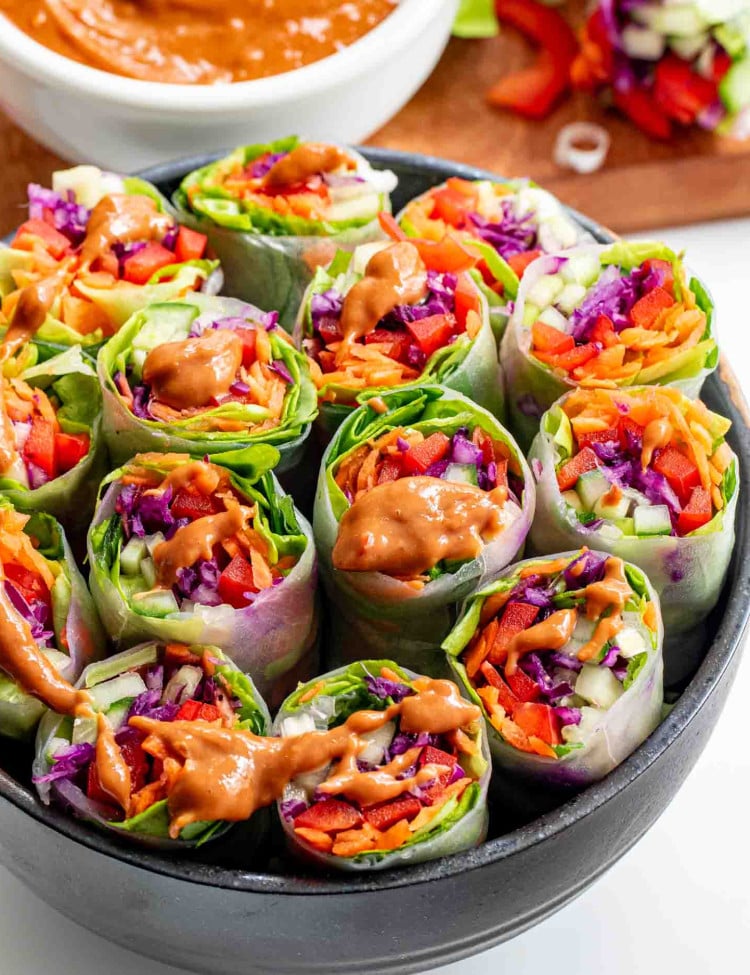
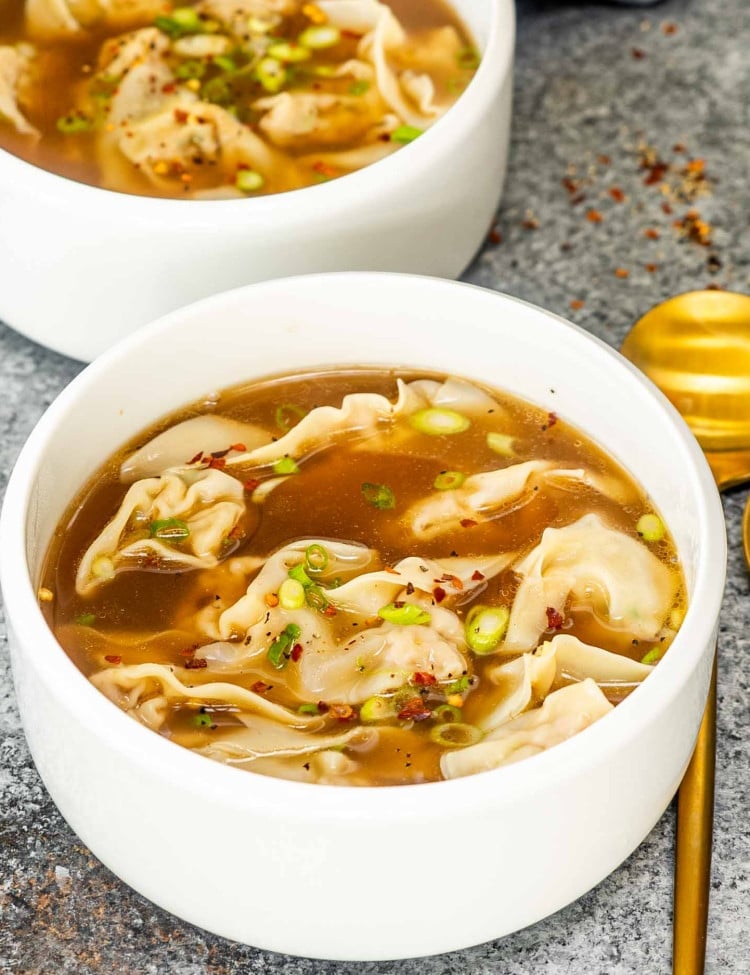

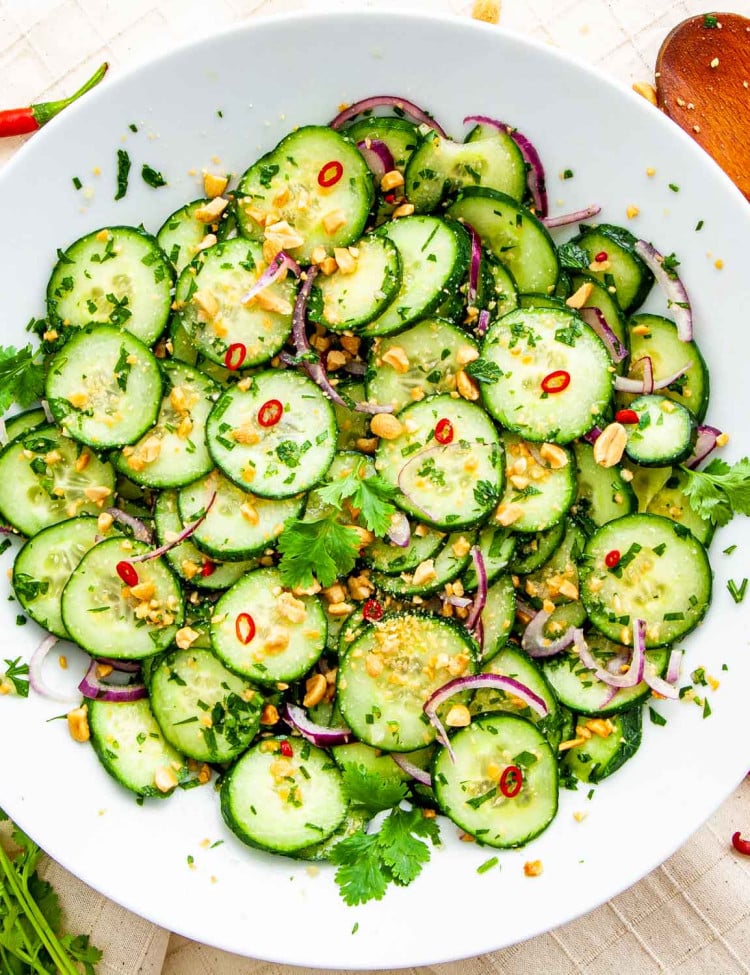



title: “Singapore Noodles” ShowToc: true date: “2024-10-04” author: “Felix Ball”
Oddly enough, Singapore noodles originate from Cantonese cuisine and are popular in Hong Kong, but they are not actually very common in Singapore. This curried noodle stir-fry is traditionally made with rice noodles called vermicelli, bell peppers, scrambled eggs, and shrimp, prawns, or pork, but this version is my healthier take on it, with a hefty portion of veggies in each serving. If you’re familiar with my Peanut Noodles or Vegan Pad Thai recipes, you know how much shredded cabbage can become noodle-like when it’s sauteed. Pair it with pasta, and it will feel like you’re eating a big plate of comforting noodles, with a sneaky serving of veggies in each bite.
Helpful Tips
What do Singapore Noodles taste like? Singapore noodles remind me of Lo Mein or Pad Thai, only there’s curry powder stirred into the sauce, so it’s slightly spicy, salty, and tangy, with a hint of sweetness. It’s not as saucy as a Thai curry sauce, but the flavor is amazing, even without a creamy sauce. Which noodles work best? This dish is traditionally made with thin rice noodles, but I usually keep gluten-free chickpea noodles on hand, so any thin noodle you have on hand will work! Linguine noodles are pictured here, but you can also use spaghetti, Pad Thai noodles, or angel hair pasta.
Ingredients You’ll Need
What are Singapore Noodles made of?
Noodles Red bell peppers Red onion Curry stir-fry sauce Shredded cabbage
You can add extra protein to this dish, like crispy baked tofu, or top it with any animal protein you like. It’s commonly made with scrambled eggs, prawns, or beef. It’s also filling on its own when you use a legume-based pasta as the base!
Note: I purchase jars of curry powder from the grocery store, and my favorite brands are Simply Organic, Trader Joe’s, or Whole Foods 365 brand. The curry powder you use may be more mild or spicy than the type I use here, so feel free to add more if needed, or start with less if you think you’ll be sensitive to the spice. Some brands are definitely more spicy than others!
Storage Tips
Leftover Singapore Noodles can be stored in the fridge for up to 5 days in an airtight container in the fridge. I think they taste just as delicious cold from the fridge, so they make an easy lunch the next day, too!
Note: If you’re using traditional vermicelli rice noodles, you’ll soak them in a pot of boiled water according to the directions on the package, rather than actively boiling them like other noodles. 2. Sauté the veggies. While the pasta is cooking, heat a tablespoon of olive oil in a large skillet over medium heat. Add the red onion, bell pepper, and cabbage to the skillet, and stir well, letting the veggies cook down for about 10 minutes.
Add the garlic and ginger, and stir for 1 more minute. 3. Make the stir fry sauce. In a bowl, combine the sauce ingredients and stir well. This isn’t the type of sauce you’ll want to taste-test directly from the bowl; the flavor will mellow out significantly when it’s tossed with the noodles and veggies.
Add the noodles and sauce to the large skillet of veggies and toss well, until everything looks evenly coated in the sauce and is piping hot. I like to add in a 1/2 teaspoon of salt and a 1/2 teaspoon of ground black pepper to boost the flavor, too, but you can add that to taste. 4. Enjoy! Serve the noodles warm right away for the best flavor and texture. These are also delicious cold from the fridge the next day, if you have any leftovers for an easy lunch.
To reheat, simply stir them in a skillet over medium heat for 3 to 5 minutes.
If you try these Singapore Noodles, please leave a comment below letting me know how you like them! – Reader Feedback: What’s your favorite noodle dish? Let me know if you have any favorite dishes that need a healthy & easy makeover.
